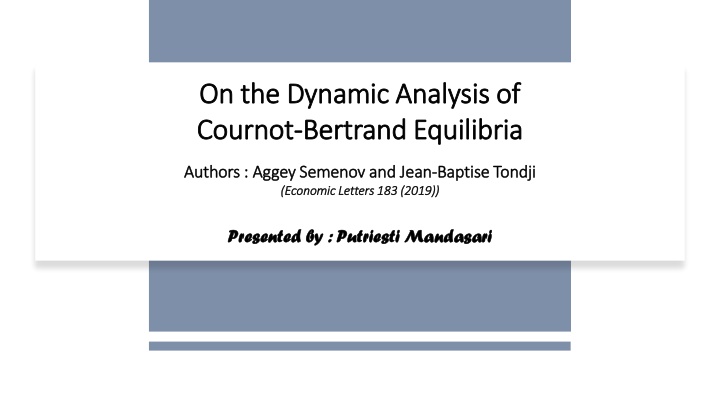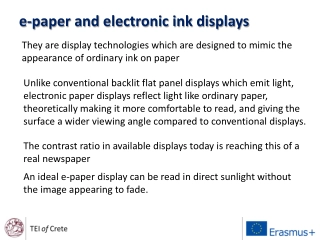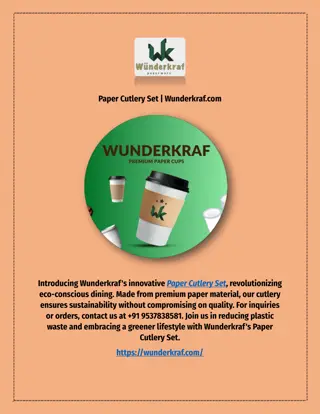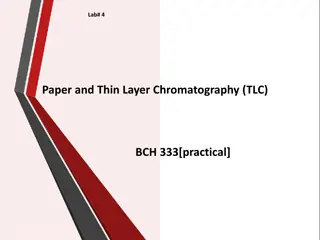
Dynamic Analysis of Cournot-Bertrand Equilibria in Duopoly Models
Explore the comparison between Cournot and Bertrand competitions in a heterogenous duopoly setup regarding R&D investment, price, quantity, and welfare. Learn how dynamic frameworks impact market competition and post-innovation dynamics.
Download Presentation

Please find below an Image/Link to download the presentation.
The content on the website is provided AS IS for your information and personal use only. It may not be sold, licensed, or shared on other websites without obtaining consent from the author. If you encounter any issues during the download, it is possible that the publisher has removed the file from their server.
You are allowed to download the files provided on this website for personal or commercial use, subject to the condition that they are used lawfully. All files are the property of their respective owners.
The content on the website is provided AS IS for your information and personal use only. It may not be sold, licensed, or shared on other websites without obtaining consent from the author.
E N D
Presentation Transcript
On the Dynamic Analysis of On the Dynamic Analysis of Cournot Cournot- -Bertrand Equilibria Bertrand Equilibria Authors : Authors : Aggey AggeySemenov and Jean Semenov and Jean- -Baptise (Economic Letters 183 (2019)) (Economic Letters 183 (2019)) BaptiseTondji Tondji Presented by : Putriesti Mandasari Presented by : Putriesti Mandasari
Introduction Introduction Static models of product differentiation mostly focus on quantity (Cournot) and price (Bertrand) types of competition. There are sectors where firms engage in mixed (Cournot-Bertrand) competition. 30 out of 70 Japanese industries firms use some form of mixed competition (Flath, 2012). Market for Japanese home electronic industry : Panasonic (quantity competition) ; Sanyo (price competition) (Sato, 1996). Market for small cars : Honda & Subaru (quantity competition) ; Saturn & Scion (price competition) (Tremblay &Tremblay, 2011).
Motivation Motivation Literature on differentiated duopoly with linear demand (Singh & Vives, 1984; and Vives, 2001) found: With symmetric costs, firms prefer Cournot competition. When product are substitutes, firms prefer mixed (Cournot-Bertrand) competition. Firms often compete each other by investing in R & D to reduce production cost (Qiu, 1997). Such dynamic framework changes the post-innovation demand and cost structures, and might affect the market competition.
Research Questions Research Questions What are the comparisons between Cournot and Bertrand's competition in a heterogenous duopoly setting in terms of: Amount of R&D investment (R&D level) Price Quantity Welfare
The Model The Model Duopoly model, 2 firms i = 1, 2 and i j Differentiated goods (q1 and q2 ) = degree of product differentiation (differentiation as ) Consumer s Utility function: U(q1, q2) = (q1+q2) (q12+2 q1 q2 +q22)/2 where > 0 and [0,1] Inverse market demands (linear): Firms may invest in cost-reducing R&D. Pre-innovation costs (constant ): R&D spending { V(xi) } lowers its marginal cost by xi
Assuming R&D spending fs. : v = productivity of the R&D technology ( v means productivity ). xi = amount of R&D investment 2 stages game: Stage 1 : Firms (F1&F2) simultaneously invest in R&D with amount of xi. Firms observe the amount invested by their rivals (Fi observe xj) Stage 2: Firms engage in mixed competition (in the market stage, F1chooses output q1, F2 chooses a price p2) Consider SPNE
Backward induction Stage 2: Equilibrium of the market subgame : Equilibrium of the game :
The equilibrium R&D level: The equilibrium q & p : Denotes:
Guarantees positive investment of R&D for both firms xi > 0 Guarantees positive post-innovation costs ci = c > 0 Needed for second order and stability conditions. If R&D investment is very productive ( ? ), the firms will invest more (xi ) to gain competitive advantage that will lead c=0 or c<0 (post innovation cost). Throughout the remaining paper, we assume that Assumption 1 holds.
Consider & = equilibrium price & quantities in the game without R&D Equilibrium of prices, quantities, and profits in the game with R&D in Mixed competitions : Firm 1 (chooses output /Cournot) Firm 2 (chooses price /Bertrand) Profits
Consider the incentives to invest in R&D. Using FOC & Envelope Theorem : + - - - Strategic effect: a firm s R&D (xi) reduces its production cost (ci), and consequently affects the competitor s strategic choice. Size effect : q1 > q2 The size effects dominates the negative strategic effect. Without innovations: , with innovations : P1 < P2 because: 1. F1 invest more in cost-reduction than F2 x1 > x2 2. Residual demand curve is more elastic for F1 than F2 so the price changes in F1 will have bigger impact on the changes in quantity compares to F2 F1 has a stronger size effect Thus, F1 has a greater incentives to lower the price more efficient higher profit.
Bertrand and Cournot Competition
Assuming this condition holds to guarantee the regularity conditions of the equilibria: The Optimal R&D investments, prices & quantities :
Cournot Model: Strategic effect (+) Residual demand is more inelastic So, the size effect is weaker Bertrand Model : Strategic effect (-) The size effect is stronger
However, the size effect is not enough to overcome the differences in strategic effects xc > xB. The relative importance of positive strategic effect compared to the size effect of F2 x2 < xB. The ranking of investment by F1 depends on the level of substitutability of goods: (-) strategic effect becomes stronger X1 < Xc if high X1 < XB However, the differences in x (level of innovations) are not enough to change the ranking of prices and quantities..
With and Without cost-reducing R&D CSB>CSC For substitute goods and without R&D, Cournot s profit > Bertrand and mixed competition. For substitute goods and with R&D, Profit F1 (mixed) > Cournot s profit since x1 > xc WB > WC since Bertrand competition is always more efficient than Cournot. Mixed competition is in intermediate welfare.
1st & 2ndAssumptions hold, the Social Planners optimal decision is symmetric:
In the socials planner model, the strategic effect vanishes. Although F1 invests more than F2 (x1 > x2) it never overinvests. For close substitute goods, F1 may produce more than the social optimum. The (-) strategic effect is strong, so to overcome it, in equilibrium, F1 produces more than the socially optimum quantity.
Conclusion Conclusion In a 2-stage game of heterogenous duopoly setting : The quantity-setting firm invests more in R&D, has a lower price, and produces higher quantity than the price- setting firm. The mixed-competition yields greater CS & W than Cournot






















